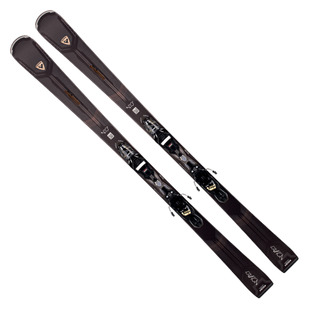3. Ski length
This may come as a surprise, but when it comes to ski length, no strict rules actually exist. Length is often determined by your weight, height and skill level, plus the type of skis you’re buying.
In general, the shorter the skis, the more manoeuvrable they are, and the longer the ski, the more stable they are. For beginners (or lightweight skiers), we recommend skis that are a little shorter, while more advanced skiers (or heavier skiers) should opt for longer.
This table gives an overview of the ski size of skis to choose for an intermediate skier.
You’ll still want to follow up with our experts for advice in store, as sizes can also vary in terms of your level (beginner to expert) and type of ski:

































